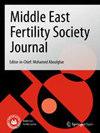Semen in the time of COVID-19: a narrative review of current evidence and implications for fertility and reproductive health
IF 1.3
Q4 REPRODUCTIVE BIOLOGY
引用次数: 0
Abstract
Historically, viruses have impaired the functionality of human systems. The discovery of novel viruses and the resurgence of established strains heighten concerns about their implications for reproduction. In the aftermath of COVID-19, research efforts have intensified to broaden the understanding of the severe acute respiratory syndrome coronavirus-2’s (SARS-CoV-2) effect on male reproduction across diverse populations. Various findings have been reported, with more studies highlighting the adverse impact of SARS-CoV-2 on semen parameters and, consequently, male fertility. This review aims to comprehensively assess and consolidate existing evidence on the impact of SARS-CoV-2 on semen quality and male fertility. It highlights the potential mechanism of action and further underscores the implications for assisted reproductive technology. A thorough literature search was conducted across various electronic databases, including PubMed, Scopus, Google Scholar, Embase, and Web of Science. Studies published between January 2020 and May 2024 were included if they explored the impact of SARS-CoV-2 on semen quality. Twenty-nine (29) studies were included in the review. These studies varied in findings but delineated a pattern and trend. While most studies noted a decline in sperm parameters—motility, count, concentration—altered morphology, hormonal imbalances, and increased DNA fragmentation in COVID-19 patients, others reported normal semen parameters 3 to 6 months post-recovery. Few studies reported no change in semen parameters, especially with mild disease. Potential mechanisms underscoring these effects include the presence of fever and consequent release of pro-inflammatory cytokines—interleukin 1β, tumor necrosis factor (TNF), and interferon-gamma (IFNγ). In addition, the activities of the angiotensin-converting enzyme 2 (ACE2) and the transmembrane serine protease 2 (TMPRSS2) receptors have been implicated as gateway mechanisms for viral entry. The long-term consequences and comparisons with other viral infections highlight the complexity of drawing definite conclusions. The different findings on semen changes have implications for assisted reproduction and family planning. Research suggests potential negative effects on gonadal function, emphasizing the need for long-term follow-up studies to understand the persistent effects on male fertility biomarkers. A multidisciplinary approach is essential to optimizing male reproductive health during and after SARS-CoV-2 infection. This includes incorporating assessments into vaccine safety studies to address fertility concerns.COVID-19 时代的精液:当前证据综述及其对生育力和生殖健康的影响
历史上,病毒曾损害过人类系统的功能。新型病毒的发现和老毒株的死灰复燃加剧了人们对其对生殖系统影响的担忧。在 COVID-19 事件之后,研究人员加强了对严重急性呼吸系统综合症冠状病毒-2(SARS-CoV-2)对不同人群中男性生殖系统影响的研究。各种研究结果均有报道,更多的研究强调了 SARS-CoV-2 对精液参数的不利影响,进而影响男性的生育能力。本综述旨在全面评估和整合有关 SARS-CoV-2 对精液质量和男性生育能力影响的现有证据。它强调了潜在的作用机制,并进一步强调了对辅助生殖技术的影响。我们在各种电子数据库(包括 PubMed、Scopus、Google Scholar、Embase 和 Web of Science)中进行了全面的文献检索。纳入了 2020 年 1 月至 2024 年 5 月间发表的探讨 SARS-CoV-2 对精液质量影响的研究。29 项研究被纳入综述。这些研究的结果各不相同,但都描述了一种模式和趋势。大多数研究指出,COVID-19 患者的精子参数(活力、数量、浓度)下降,形态发生改变,荷尔蒙失调,DNA 断裂增加,但也有研究报告称,患者恢复后 3 至 6 个月精液参数正常。少数研究报告称精液参数没有变化,尤其是病情较轻的患者。强调这些影响的潜在机制包括发热和随之释放的促炎细胞因子-白细胞介素 1β、肿瘤坏死因子 (TNF) 和干扰素-γ (IFNγ)。此外,血管紧张素转换酶 2(ACE2)和跨膜丝氨酸蛋白酶 2(TMPRSS2)受体的活性也被认为是病毒进入的关口机制。长期后果以及与其他病毒感染的比较凸显了得出明确结论的复杂性。关于精液变化的不同研究结果对辅助生殖和计划生育都有影响。研究表明,病毒对性腺功能有潜在的负面影响,因此需要进行长期跟踪研究,以了解病毒对男性生育能力生物标志物的持续影响。在感染 SARS-CoV-2 期间和之后,采用多学科方法优化男性生殖健康至关重要。这包括将评估纳入疫苗安全性研究,以解决生育问题。
本文章由计算机程序翻译,如有差异,请以英文原文为准。
求助全文
约1分钟内获得全文
求助全文
来源期刊

Middle East Fertility Society Journal
REPRODUCTIVE BIOLOGY-
CiteScore
2.80
自引率
0.00%
发文量
32
审稿时长
45 weeks
 求助内容:
求助内容: 应助结果提醒方式:
应助结果提醒方式:


